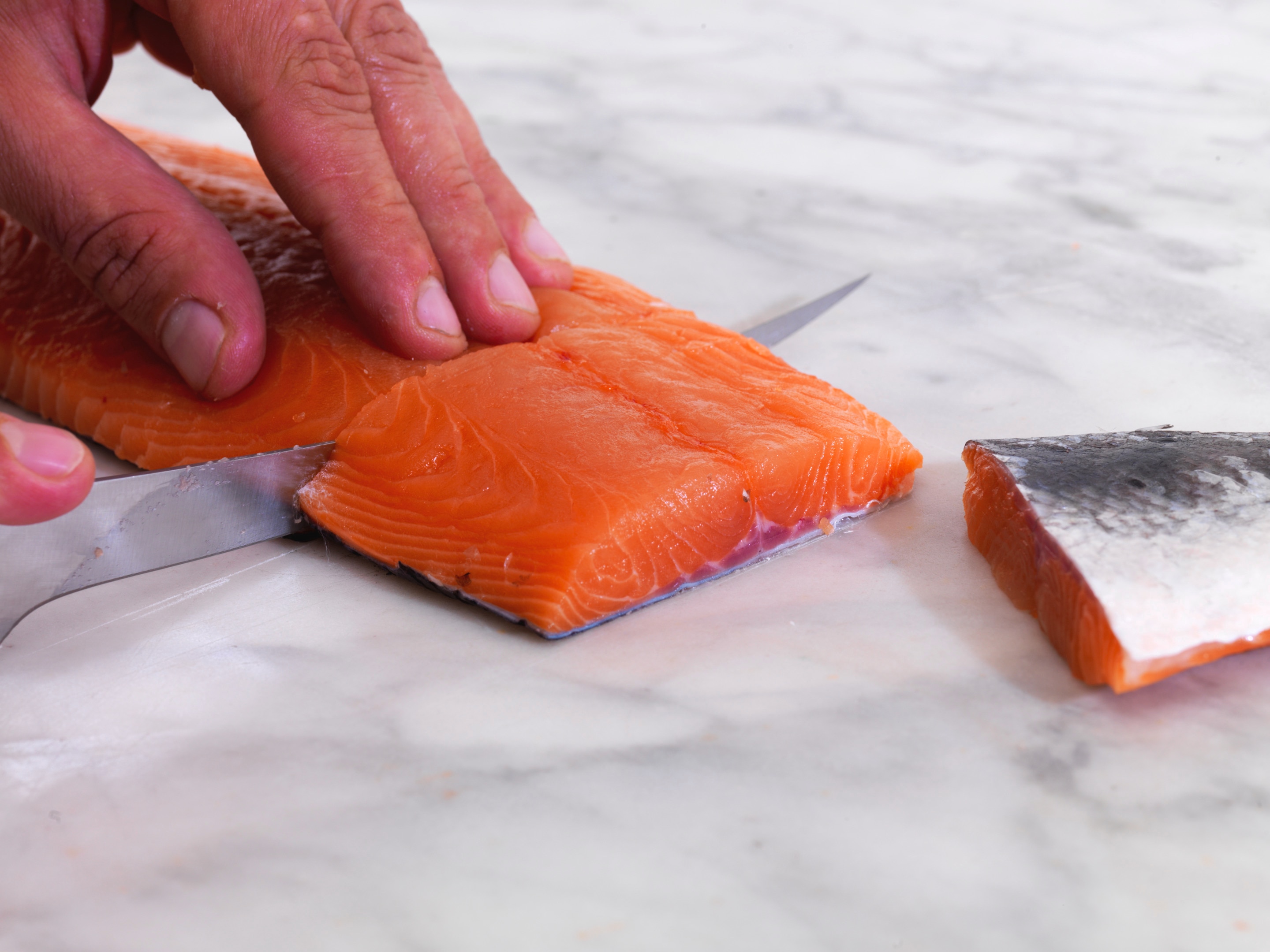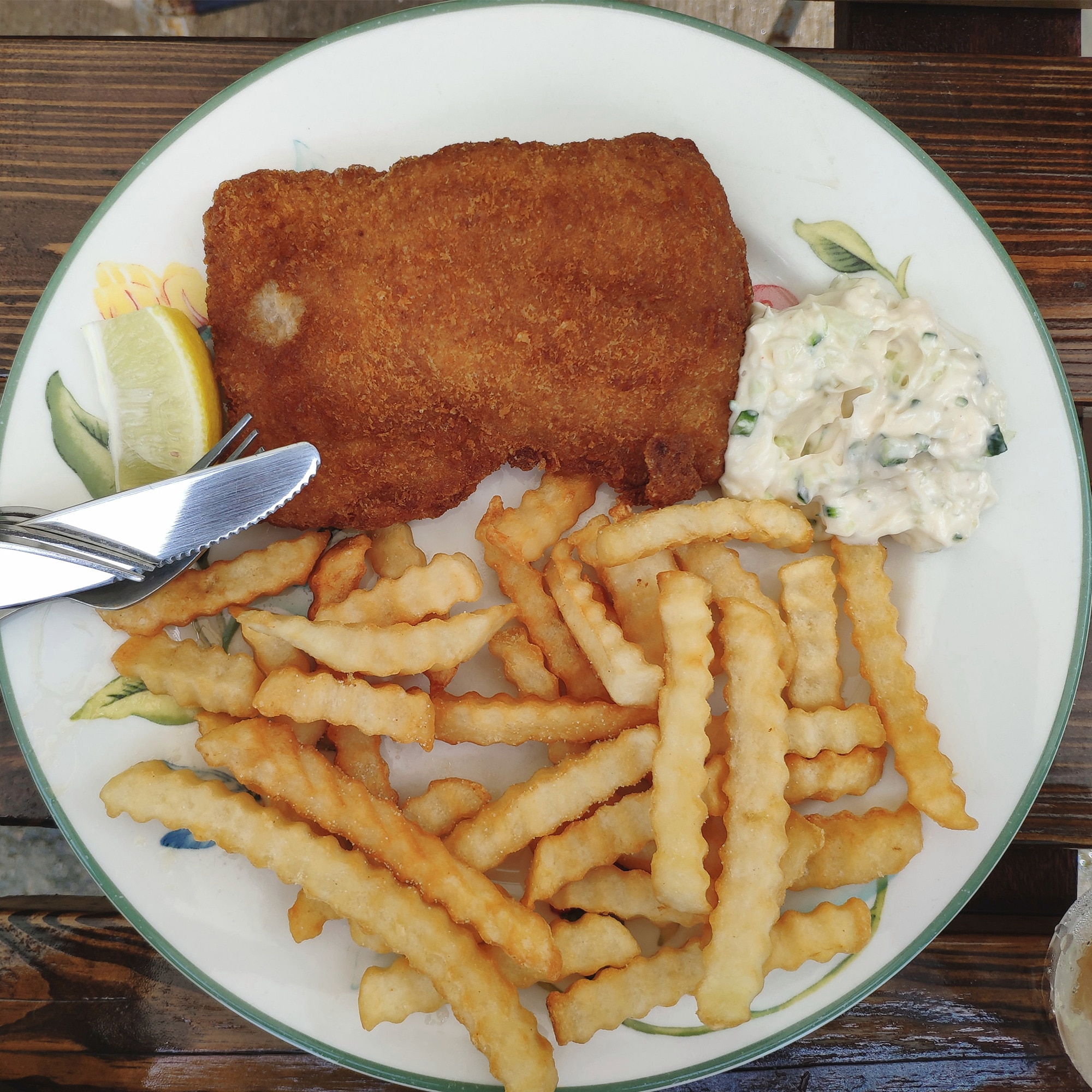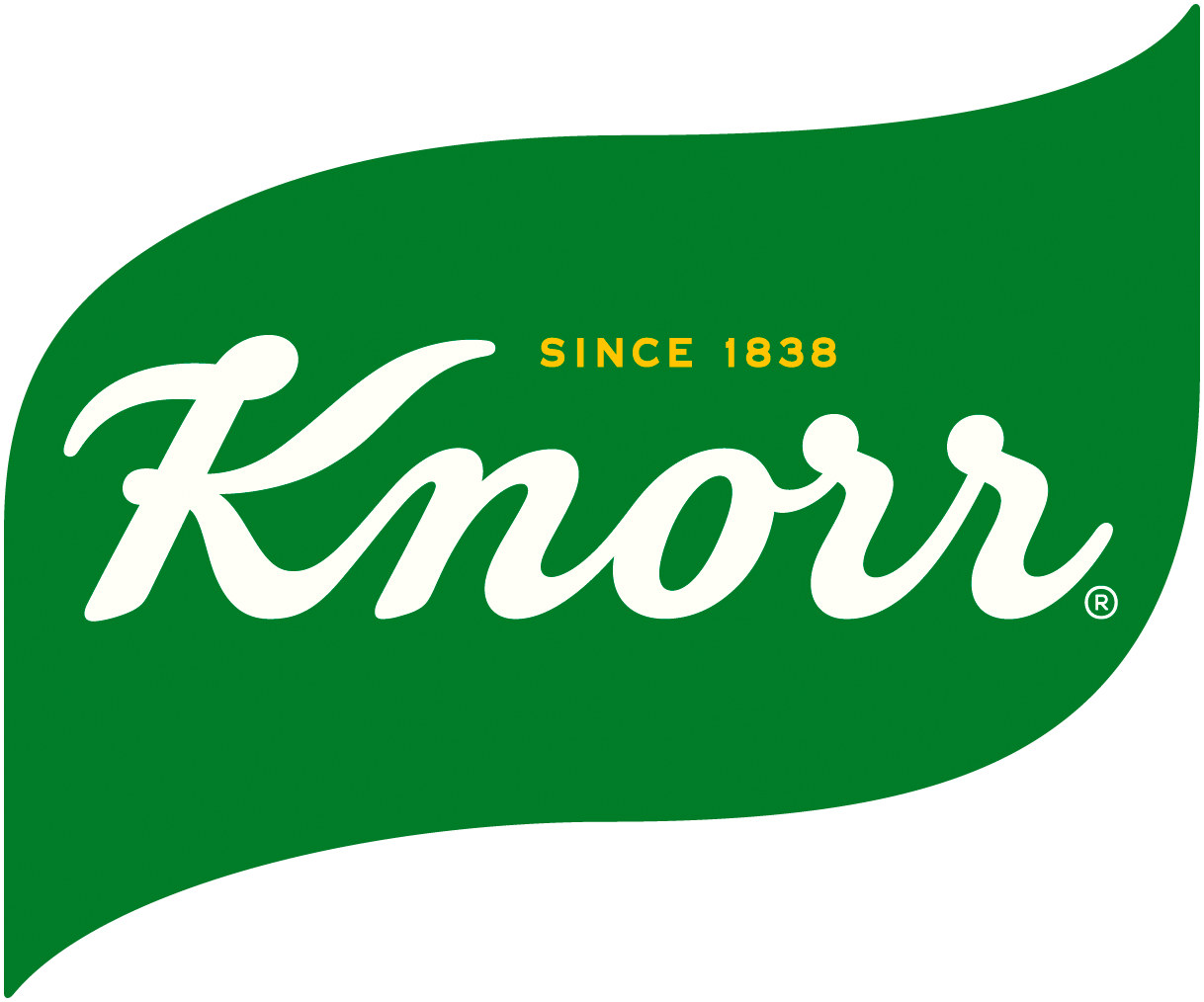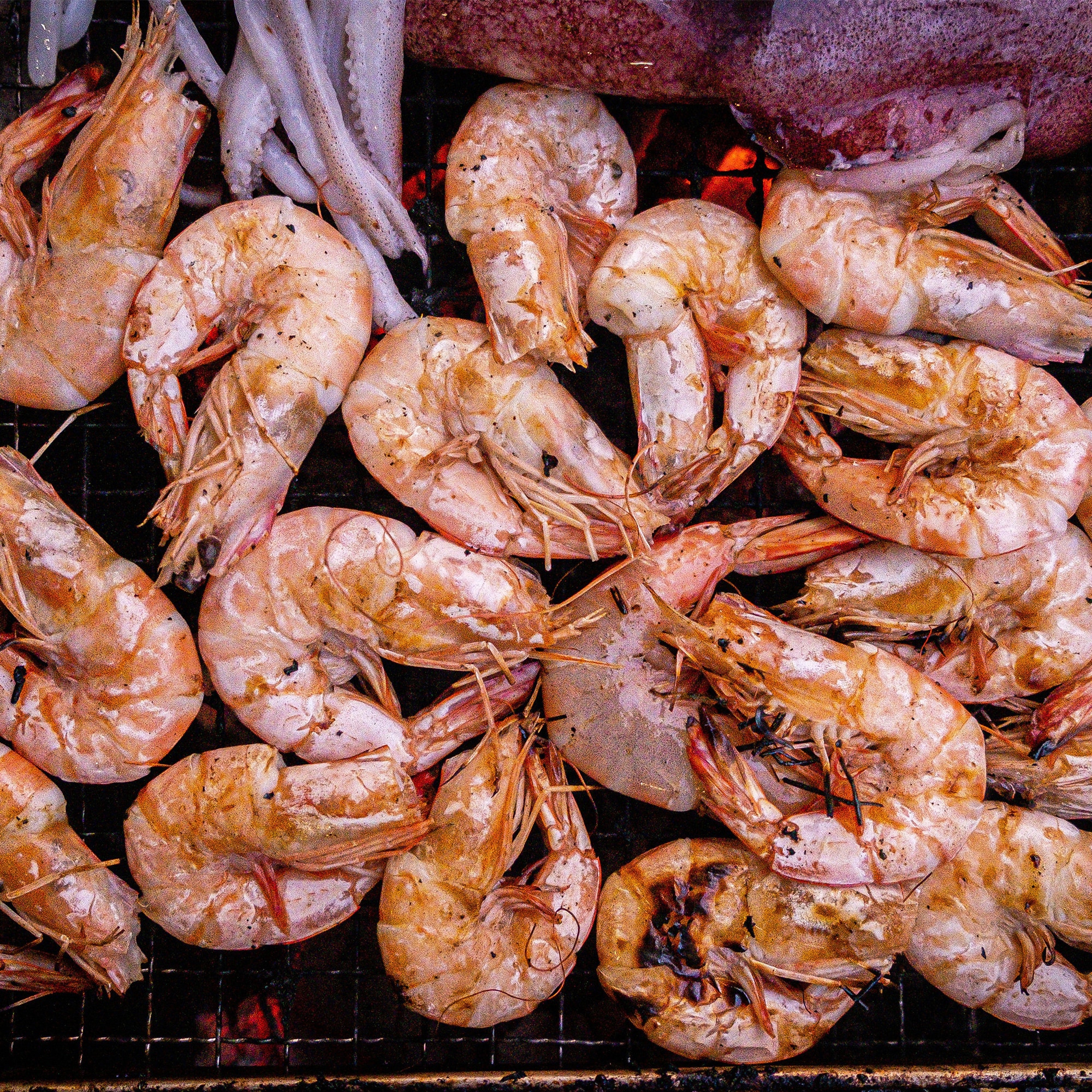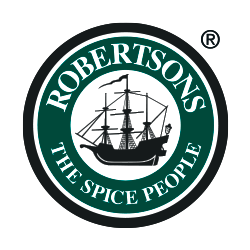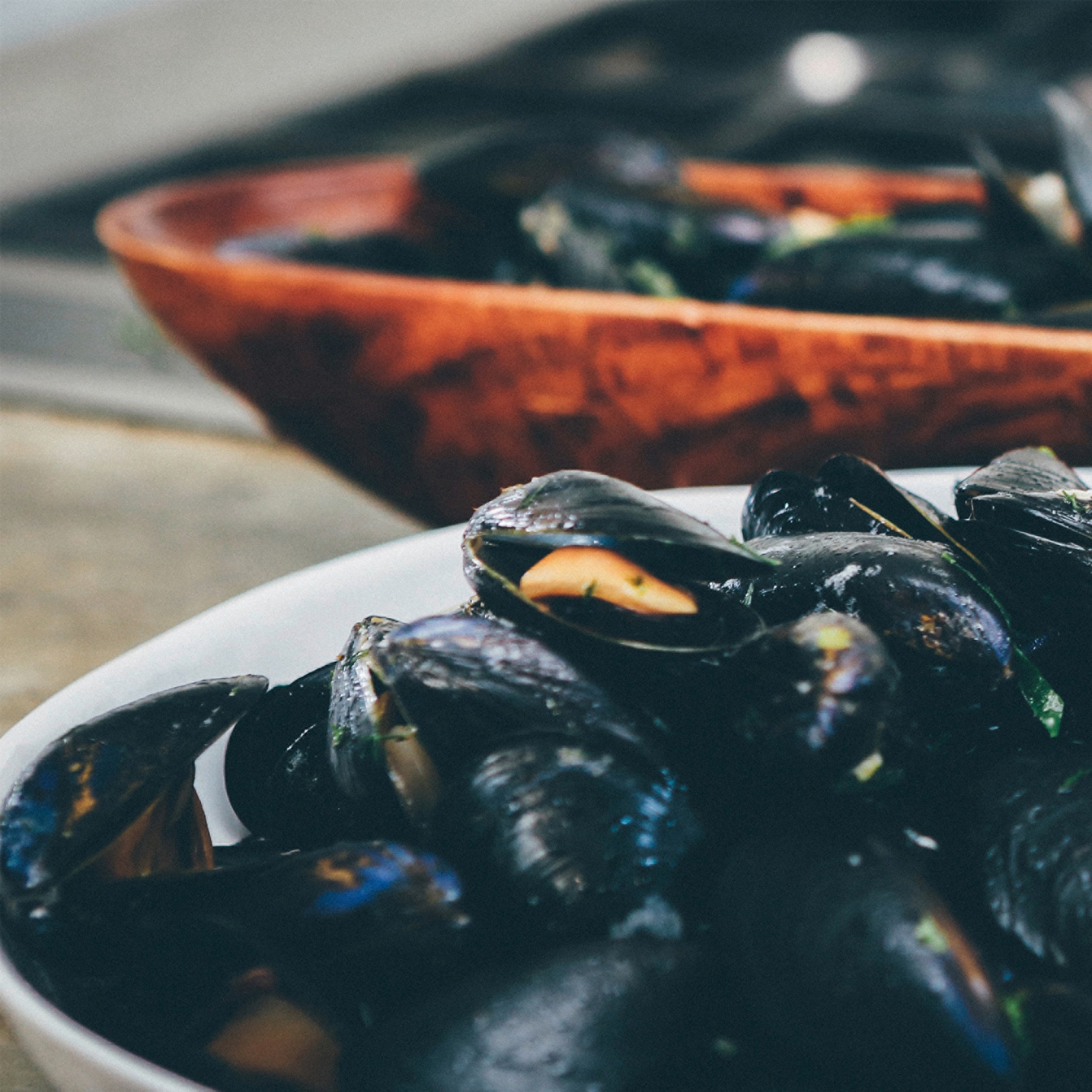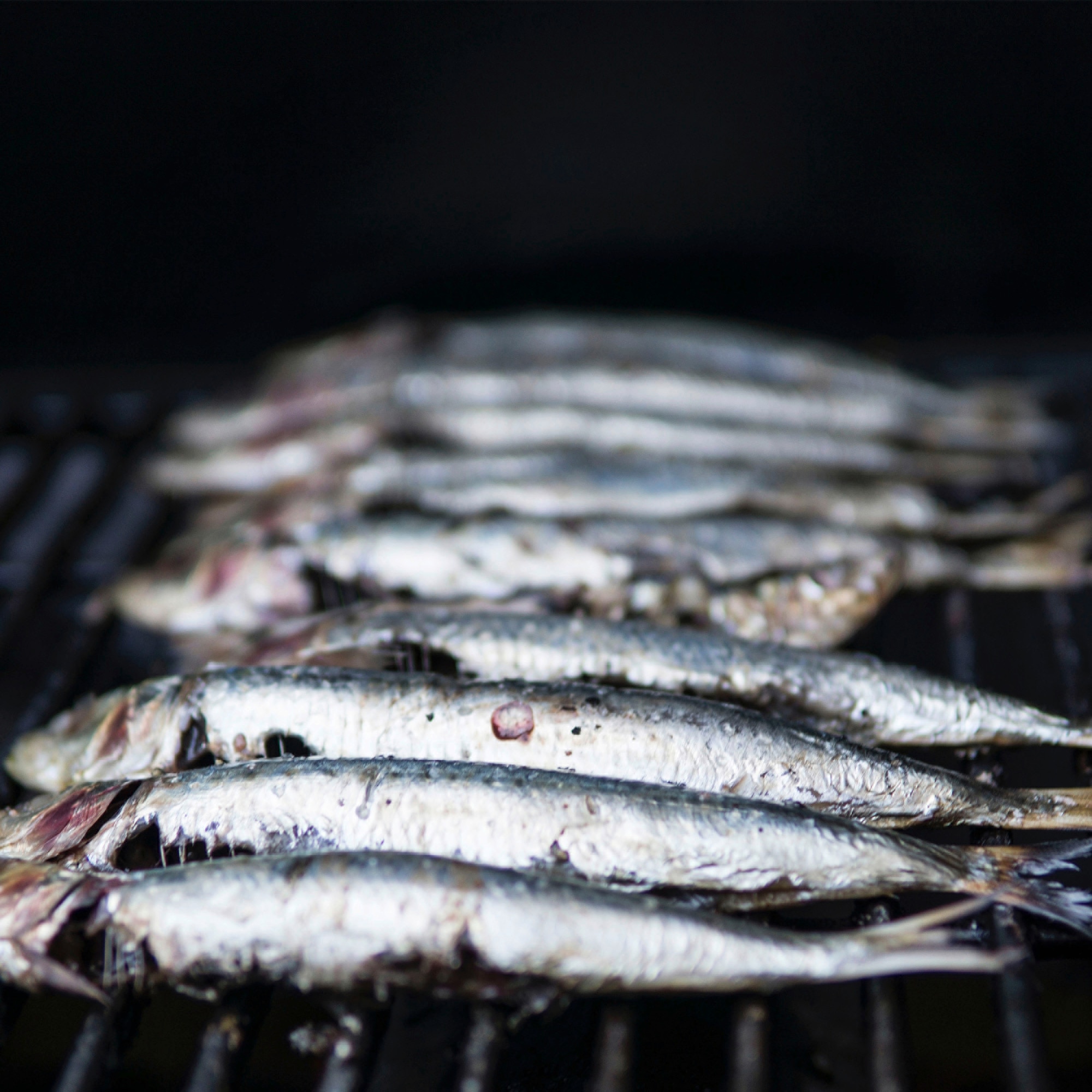Skip to:
How to Cook Salmon
There are many great ways to cook salmon, and we need to take care to cook it perfectly. For best results, you should ideally start off with a whole salmon that is as fresh as possible and then gut and clean it yourself. This may seem tricky at first, but with a few specific techniques, you’ll be able to gut fish like a pro. Firstly, you should choose a salmon that smells of the sea (not overly fishy - this means that the salmon isn’t fresh).
Make sure that you find a bright pink colour behind the gills, not brown, grey or dark blue. The eyes should be shiny and the scales should be tight and not flaking off and all together the fish should be firm to handle. If you’d rather opt for pre-filleted salmon, choose steaks and fillets with smooth cuts. Fillets that look dry, have gaps in the flesh, or aren’t firm to the touch are probably from old fish.
How to Gut and Fillet Salmon
Your fishmonger will always gut, clean and fillet the salmon for you. But if you prefer to do this yourself then follow these guidelines:- Place the fish flat on your sink work area. Using a knife, scale the fish firmly, by scraping from tail to head, without hacking into the skin. Wash the scales away under running water. Place the fish back on the sink area work space with the tail to your left, underside facing you.
Begin to pierce the underside of the fish using a small hole by the tail as a guide. Run the knife from the tail to the head, gently cutting open the underside of the body, taking care not to puncture the guts. Open up the body of the fish a little from the cut you just made. Remove the guts gently and wash the salmon thoroughly with plenty of water.
Place the fish back on a clean work surface so that the head is on your left. Using a pair of scissors, carefully remove the fins cutting as little flesh as possible.

Start to cut the head off the fish by making an incision in the head, just below the gills. Cut downwards towards the spine, stopping when you reach the spine bone. Do not cut the head off completely at this point. Cut only to the halfway point so that the head remains attached to the bottom half of the fish.
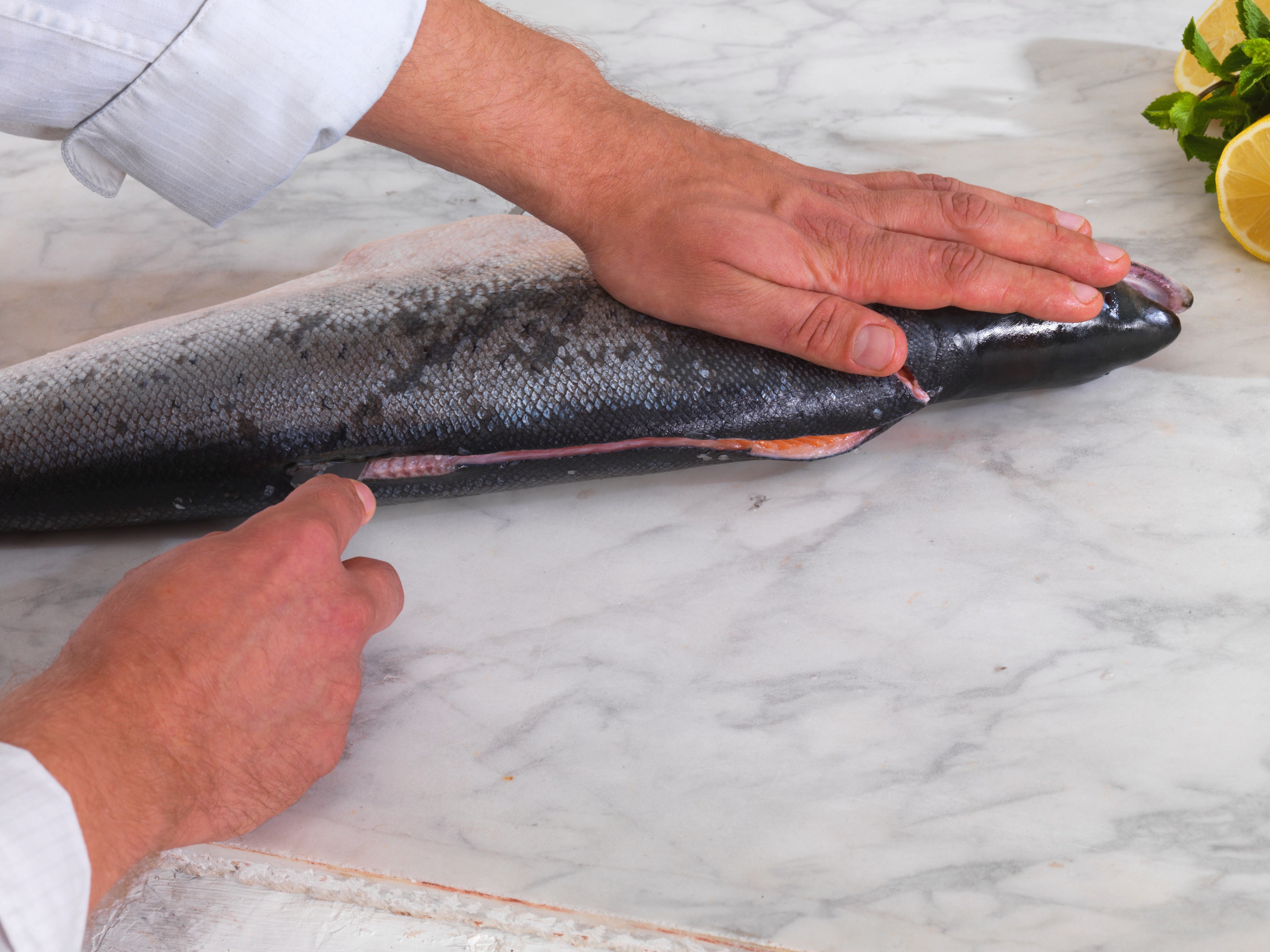
Place the fish, so that the tail is on the left, and the spine is facing you. Insert your knife into the top of the head. Now turn the blade so that it's running parallel with the spine, with the sharp end of the blade pointing towards the tail. With the knife resting flat on top of the main spine bones and holding the fish by the head, run your knife towards the tail cutting the flesh to remove the top half of the salmon from the spine leaving the tail intact.
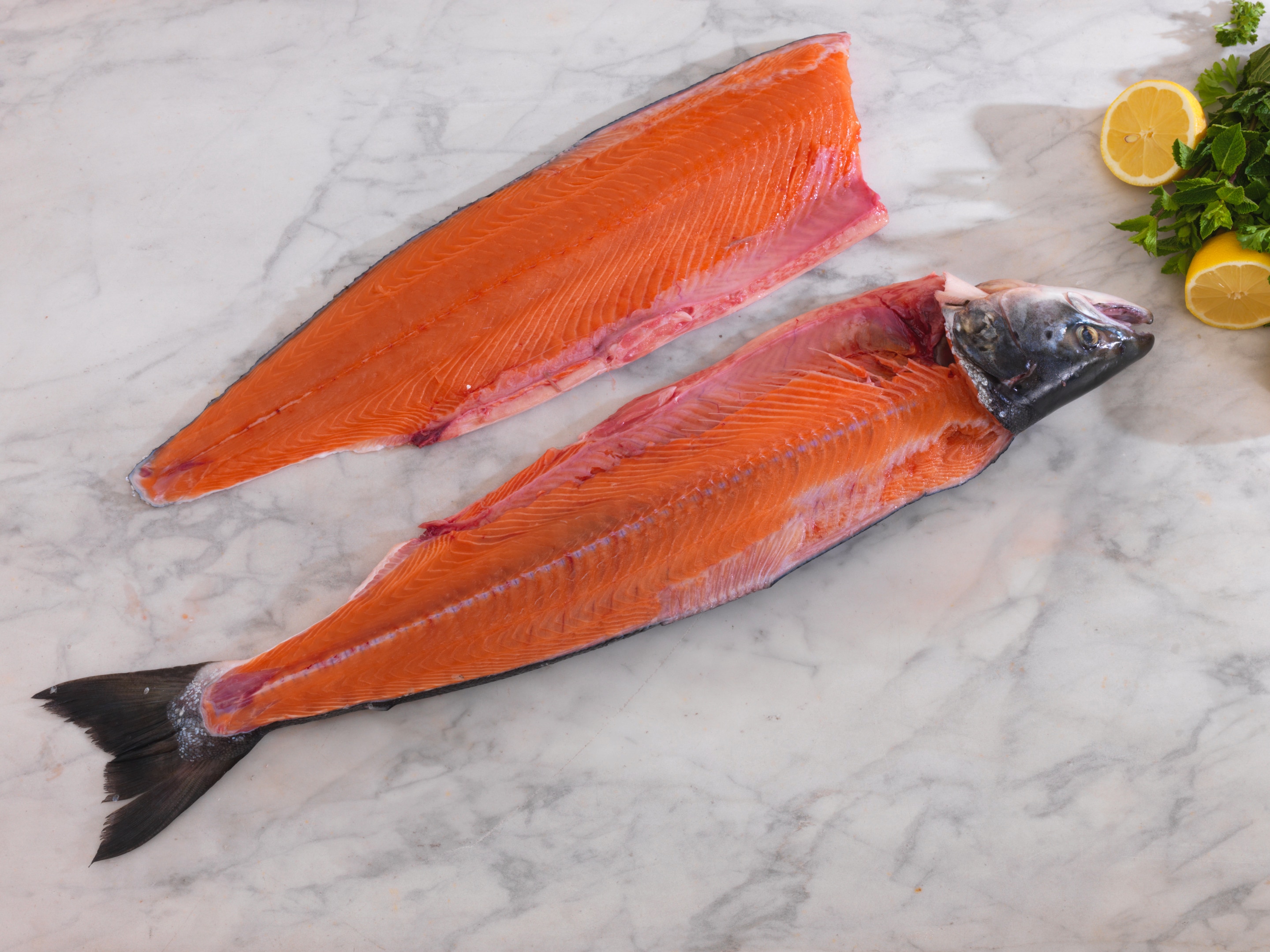
Cut in such a way that leaves the tail on the bottom half of the fish. Remove the top fillet of salmon and set aside. Turn the whole fish over and start to cut the head off the fish as before, cutting downwards towards the spine but stopping at the spine bone. Do not remove the head. Turn the whole fish back over so that you have the skin side down on the work surface.

Placing your knife underneath the head and spine, turn the blade so that it's running in parallel with the fish, with the sharp end of the blade pointing towards the tail. Start cutting the bones away from the flesh, moving the blade towards the tail. Be careful to keep your hand well away from the knife blade.

When you get towards the tail, cut down so that the tail is removed from the flesh. The head, bones and tail should now be removed from the bottom half of the salmon leaving the two large sections of salmon ready for trimming. Trim away the remaining bones from both halves of the salmon.
Now run your hand along the top of the salmon from head area towards tail area to lift up the pin bones and remove these using a pair of pliers or scissors. Keep rubbing your hand across the top of the fish to be sure you’ve caught all of the bones.
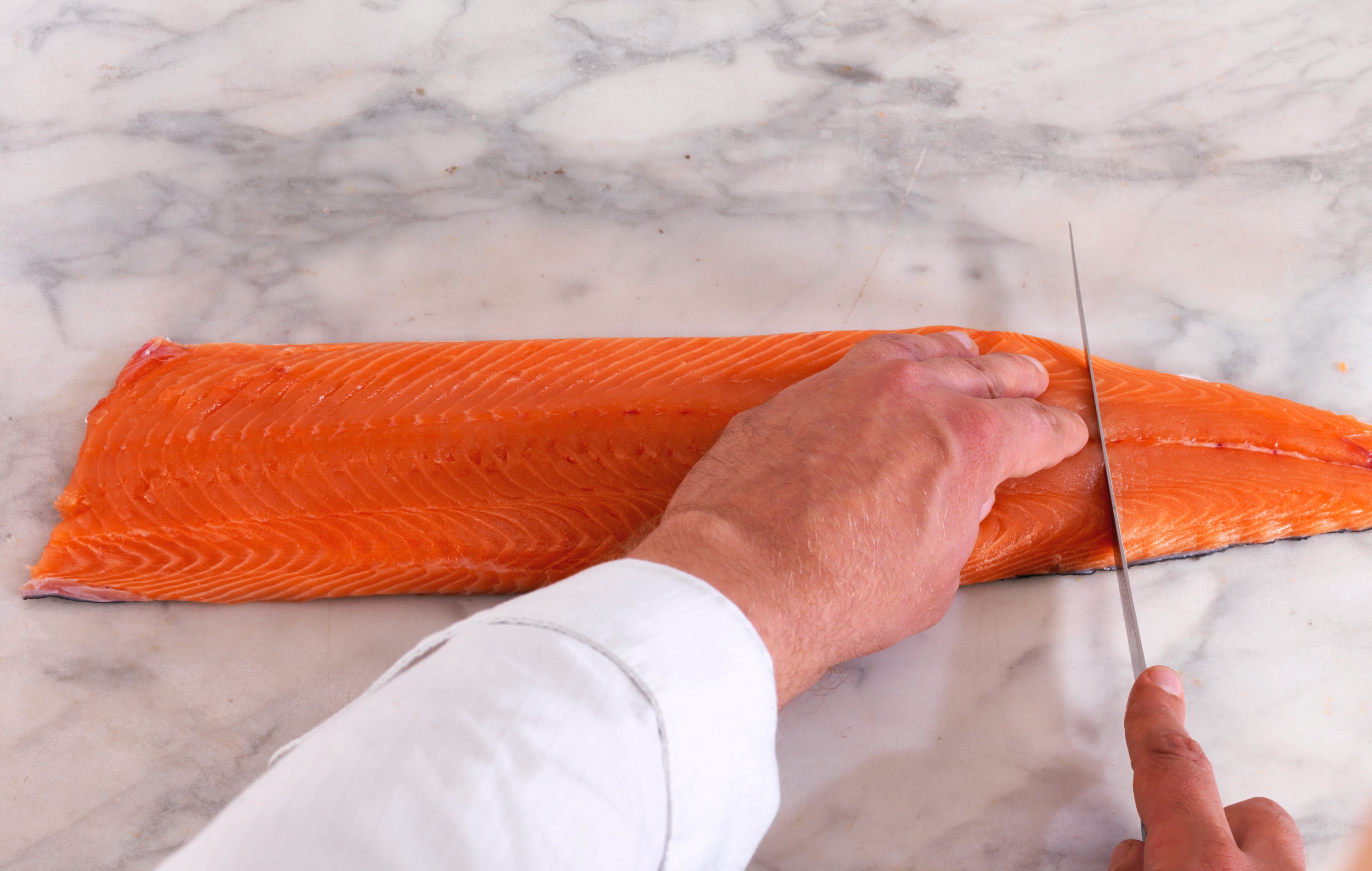
Place the fillets with the flesh side facing up, on a chopping board and cut vertically into steaks to the width of your choice, starting at the tail.
How to Braise Salmon
When braising salmon, make sure to use only a small amount of liquid, no more than a third of the thickness of the fish.
How to Grill Salmon
Grilling is one of the most popular methods of cooking salmon. In order to draw out the natural juices of the fish, try sprinkling the salmon with a little salt 2-3 minutes before cooking it. Grill the salmon until it changes colour and becomes flaky. You can check this by inserting the tip of a sharp knife near the thickest part of the salmon and pulling on it slightly. If it flakes easily, it is ready.
Also try to remember that thin cuts of salmon will cook quicker than thick cuts and so cooking time should be shortened accordingly. For great flavour, heat a little olive oil, add a Knorr Vegetable Stock Pot and stir well over gentle heat for 2-3 minutes. Remove from heat and leave to cool for 10 minutes. Add some lemon juice and finely sliced garlic. Pour the liquid over the salmon and marinate for 30 minutes before grilling.
How to Poach Salmon
Poaching is a great way to cook salmon without adding any fat. Simmer the fish gently and make sure that the liquid doesn’t boil. For extra flavour add a Knorr Vegetable Stock Pot to the poaching water.
